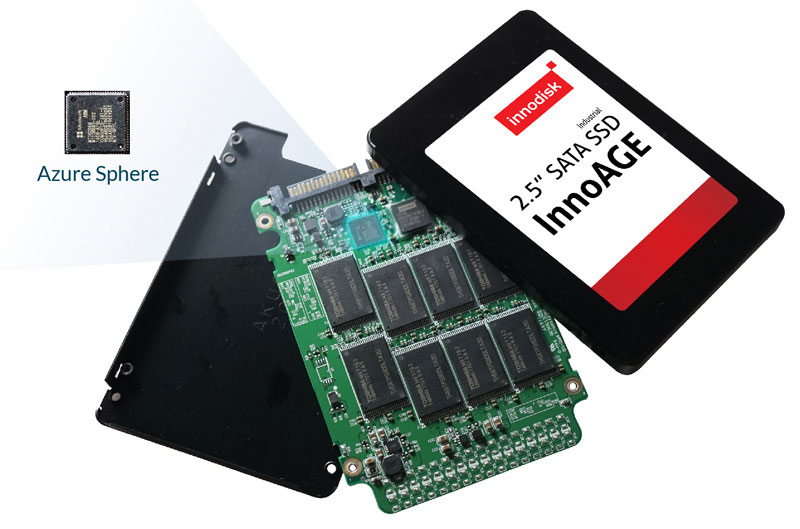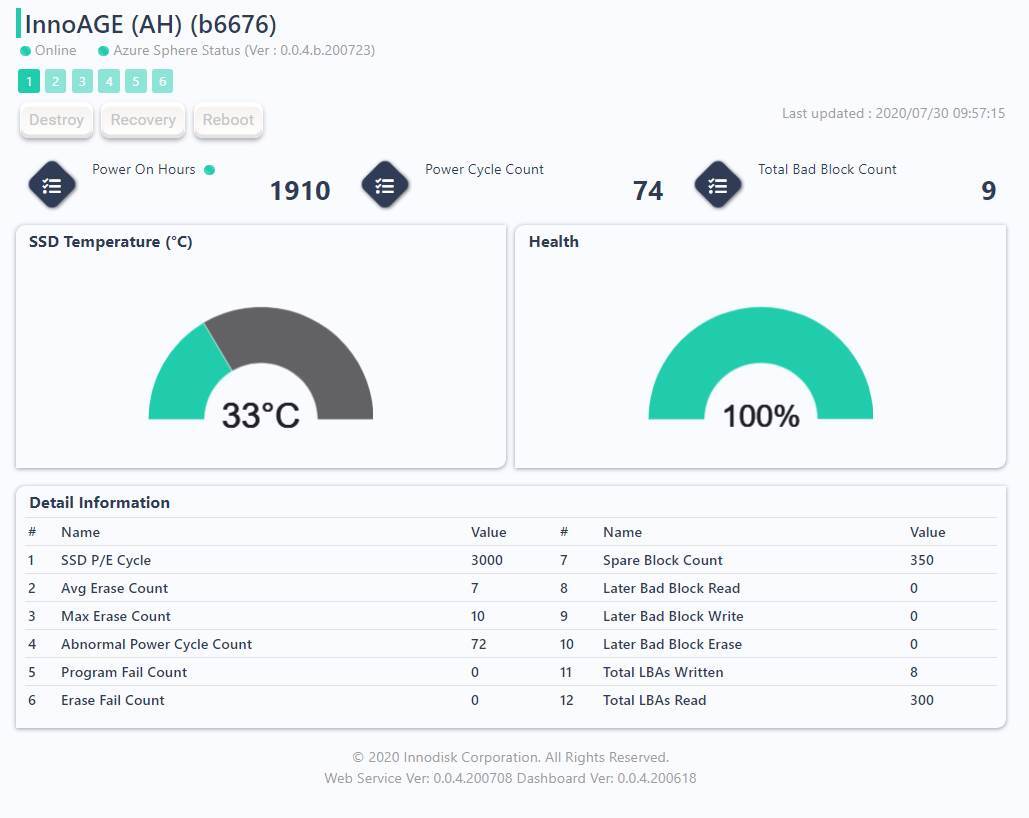How the InnoAGE SSD with Microsoft Azure Sphere makes multifunction management easier and more secure

Business owners that integrate Internet of Things devices into their company model will inevitably run into both major benefits and unexpected costs. Connected devices offer automated labor and monetizable data on customers, but also tend to incur major IT repair costs, as your technicians must go on-site to fix each malfunctioning or hacked device one by one.
Industry estimates put the demand for IoT-connected products at 75 billion in 2025—almost triple today’s numbers. But to scale your business to take advantage of this market opportunity, you would need to scale your IT department proportionally, to keep your devices functional and user data secure from outside threats. That obviously isn’t a solution for most companies.
The only sustainable option for growth is cloud-based: connect your edge devices to one network, so updates and fixes can be pushed from a remote hub to all machines at once. Your technicians will become more productive and cost-efficient, while also less overworked.
But this type of network is difficult to implement and vulnerable to outside attacks unless you have the right hardware for the job. Enter Innodisk, which has developed the first SSD with built-in Microsoft Azure Sphere support for end-to-end security.
Embedded into your AIoT devices, the InnoAGE hybrid SSD allows you to apply over-the-air (OTA) updates to and remotely control your devices through the cloud. To keep this remote connection secure, InnoAGE firmware can only work with secure Azure Cloud commands sent from your technicians, keeping bad actors out of your system.
The InnoAGE hybrid SSD has three main features that make it crucial for your AIoT devices. First, it allows you to execute debug messages remotely to any device, using in-band or out-of-band (OOB) networks. Second, it enables you to optimize the storage lifespan of your devices. Third, in the event of a system crash, the SSD has stored backups allowing you to remotely revert the device to its default setting.
Innodisk’s SSD is designed to be accessible through in-band and out-of-band (OOB) networks. You can access its data locally through your router and SSH protocols, or remotely through the cloud. If your device fails and its local network goes offline, OOB management is essential for recovering the device data and getting the in-band network connection back online.
With the InnoAGE SSD installed, you minimize the need for your repair team to solve problems on-site. Should any networked device crash and go offline, your tech team will use OOB access to find out what went wrong, then reboot to factory settings or debug the code.
Some companies already use OOB management to fix devices, but they could tell you that remote access by itself won’t prevent your on-site technicians from getting overwhelmed. They must still access each malfunctioning device individually, find out what went wrong, fix the problem, and try to salvage the pre-crash data. Your labor and costs will still grow as your business grows.

With InnoAGE SSDs embedded in all your devices, however, OOB management becomes far more straightforward and less labor-intensive. Rather than being forced to dive into individual devices’ code and fix them one by one, you will access their solid state drives through the cloud-based Innodisk interface. If you spot an error in one of your devices, you can push updates to all of their SSDs at once through the cloud, saving significant labor and preventing costly downtime as each device is fixed.
Direct OOB management of all your edge devices will have several immediate benefits for your AIoT business. First, as you scale your business across great distances or expand your product line, your IT team will still have complete remote access of every device through this hub, in the office or even while working from home.
Second, you can track the read/write health patterns of your Innodisk SSDs over time. If any SSDs are performing suboptimally, you’ll know immediately through the cloud. Preemptively debug and repair them as they begin to slow down, extending their lifespan instead of waiting for them to crash.

Probably your greatest boon to long-lasting AIoT devices, however, will come down to Microsoft Azure Sphere support. Various major companies like Starbucks and Bosch employ Azure Sphere to secure their kiosks and user data, and Innodisk itself secures your cloud, devices, and cloud-device connection through Azure security, stored on the InnoAGE SSDs.
AIoT technology is being used or developed in myriad industries, from autonomous vehicles to unmanned surveillance to personalized retail experiences (think Minority Report). This often means your edge devices will be collecting personal data on customers, and the very last thing you need is for hackers to gain access to that data. Storing said data on protected SSDs, and securing the cloud transfer of data, is vital to protecting their privacy and your company from lawsuits.
As the only data storage partner with Microsoft Azure Sphere, Innodisk and its InnoAGE SSD can offer your company reduced technical downtime, more robust security, and a much happier IT department. With an ecosystem of edge devices all accessible from a single web dashboard, you’ll efficiently keep your current devices chugging along, freeing up resources to build your business even further.
Sign up to the TechRadar Pro newsletter to get all the top news, opinion, features and guidance your business needs to succeed!
